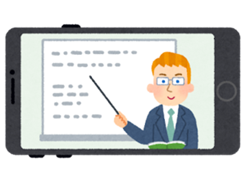Note: This blog post was originally written in Japanese for our Japanese website. We used our machine translation platform Translation Designer to translate it and post-edit the content in English. The original Japanese post can be found here.
As we are a translation company, many of our team members have a project management role, which coordinates various projects. We receive requests every day from a wide variety of customers, both domestic and overseas. Because time zones vary in each country, we receive emails for 24 hours a day. It's pretty intense every day because you never know when or what kind of project will come up. Therefore, how efficiently we can respond to a variety of projects is an important factor in making our work easier.
In this post, we would like to introduce some tips from our project managers to improve the efficiency of coordinating translation projects.

Creating a template for everyday communication
First, we'd like to start off with the most basic aspect of any job. One of our project managers mentioned that it's good to create templates for instructions when assigning linguists to work on our translation projects. For projects that we receive on a regular basis, the specifications tend to be roughly the same. So, we compile the information such as the file format, usage of translation, target readers, tools to be used for translation, reference materials, and things to pay attention to into a template document and have them ready for each project. When creating a template, the key is to determine how much commonality there is and how to reuse it. In addition, using a tool is very useful for saving commonly used phrases for these templates.
One Japanese tool we use is a template saving tool called "Clip NOTE." Our team likes this tool because they can save phrases by category of use cases and can instantly call up saved phrases at any time with shortcut keys.
Centralizing files and their distribution
When we have large projects, it can mean working with more than 50 translators on a single project at the same time. If we were to hand out files to each translator individually, it would be impossible to complete the coordination work within working hours.
So, what our project manager did was to put all of the files together in one folder and share that folder to everyone. When doing so, you will need to let the translators know which person is responsible for which file, so we also create a list with the file names and the translator working on it. Once you have prepared this list and the distribution folder, you can distribute the files to everyone with a single email.
It is important to note here that translators' names are personal information and cannot be included in the list. Instead, we assign them a unique ID in advance, and they will be able to retrieve their files by checking that ID. In this case, it is important that you have the translators let you know which files they have obtained so that there are no mistakes. This is because it is possible that once delivered, it turns out to be a different file from what they were actually assigned.

Using tools and videos for reference materials
Regarding reference materials for translation work, distributing them one by one to each translator would take time and effort. So, this is also an area where you would like to improve efficiency.
If you utilize something like Microsoft SharePoint, you can simply provide the translators with the site URL. The translators can each view the materials uploaded there, eliminating the need for distribution. In addition, these collaborative platforms like SharePoint not only allows you to upload files such as Word and Excel, but also allows you to create articles on the page and edit them directly. This eliminates the need to re-upload files when there are updates. Moreover, translators can just access the site for these materials and no longer need to download files, which means there is no need to keep the latest documents on hand.
The next thing to consider if you want to increase the efficiency of preparing your reference materials is creating instructional videos. Creating a reference document from scratch inevitably takes time, as it requires considering the structure and table of contents and writing clear instructions in paragraphs. So, why not save time by explaining the steps while performing the actual work, recording the screen, and making it into a video. It's easy to understand for translators because they can actually see how the work is done. Also, creating these videos don't take much time on our end as we keep it simple with no editing work such as inserting screenshots or images.
In recent years, instructional videos of various genres have been created. We think there is potential for videos to be used not only for these kinds of instructions but also in everyday work. (However, some people prefer documents saying that they can understand things more quickly and accurately. Others say watching videos from start to end takes time. So, it might be good to consider the option of combining documents and videos.)

Summary
In this post, we introduced some tips on how to make coordination work for translation projects more efficient with a bit of ingenuity. There is no end in sight when it comes to efficiency, and circumstances and technology change every day. It's important to always keep your ears open to the latest developments and keep on coming up with new ideas.
Tools and apps are constantly evolving, and it can be a struggle to learn how to use them or how they work. However, there is also the possibility of discovering useful functions that have never been seen before, and they might help you improve your workflow. We always remind ourselves how it's important to keep learning and striving to improve.
Kawamura's translation services
Kawamura International offers translation services in fields such as IT, medical devices, legal, finance, and patent, supporting more than 40 languages.
We provide consulting on the effective use of machine translation with post-editing services along with human translation services to meet the various needs of our customers. Not only that we also handle a variety of language-related services, such as editing and localization services of video and audio data.
Get in touch with us if you need professional translation services or have any other questions about translation and localization services in general.
_CMYK_OL.png)

